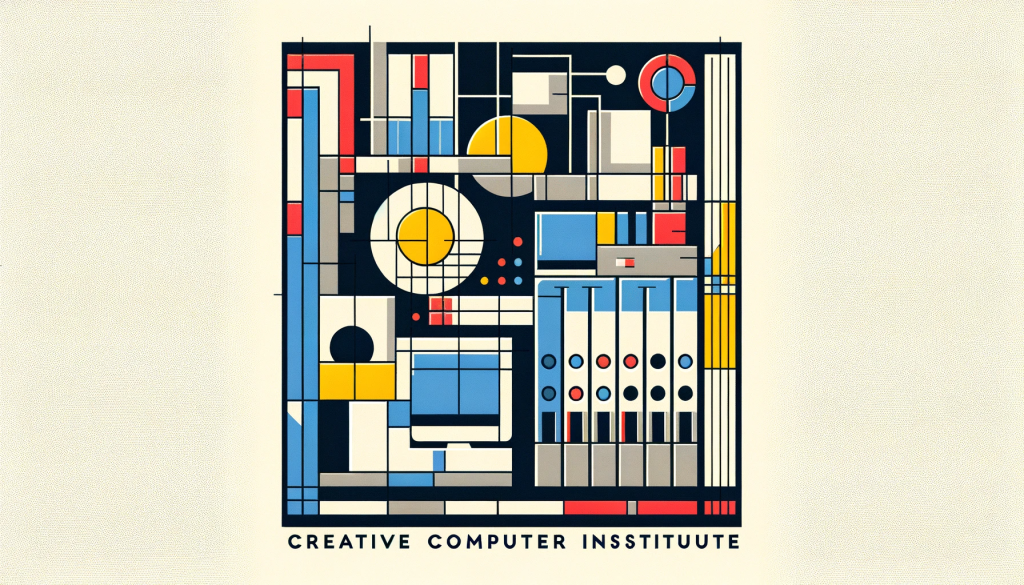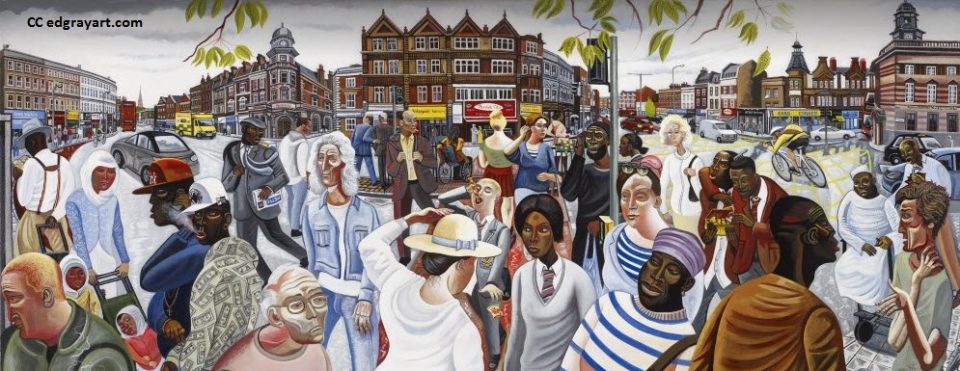Tags
The following post is entirely generated using AI. It is based on the AI Conversation session that took place with the Professor Mick Grierson from the Creative Computer Institute at UAL . The session was recorded in MS Teams, which automatically created a transcript. The transcript was summarised in Claude and the blog post was generated using ChatGPT4. Image created by DALL-E 4.

In a recent interview, Professor Mick Grierson of the Creative Computing Institute (CCI) at the University of the Arts London shared valuable insights into the evolving world of artificial intelligence (AI) in creative fields. Grierson, with his rich background as a musician and sound engineer, delved into his journey into AI and its implications for music production since the 1990s.
Grierson’s initial foray into AI was through his PhD work, where he explored cognitive modeling to generate audiovisual artworks using algorithms. This academic pursuit laid the groundwork for his later research in generative machine learning and the development of systems capable of producing AI-generated artworks. His work at CCI, notably with students and researchers, has contributed significantly to advancements in AI-generated video art and interactive generative art using deep learning, including collaborations with prominent companies like Google.
Discussing the CCI, Grierson highlighted its unique approach, blending computing with creative practices and industries. Unlike traditional computer science programs focused solely on technical skills, or critical studies programs lacking hands-on computing experience, CCI aims to bridge practical application with critical thinking. The institute offers programs in creative computing, computer science, and data science at both bachelor’s and master’s levels.
A key point Grierson emphasized was the necessity of understanding AI’s limitations and failures, as much as its capabilities. He noted that AI tools might not always be effective for specific communities, underlining the importance of evaluating AI for each application area. Grierson also dispelled common misconceptions about AI systems, clarifying that they are not fully reasoning or aware entities but are designed for specific tasks like predictive text generation.
Grierson touched upon the hype surrounding AI, suggesting that commercial interests might obscure AI’s workings to evade regulation or competition. He referenced AI pioneer Marvin Minsky’s practice of overselling AI capabilities to attract funding, highlighting a long-standing trend of capitalizing on AI hype.
To foster critical evaluation of AI, Grierson suggested adopting visual arts theorist John Berger’s ideas of questioning the reality or truthfulness of media representations. This critical reflection is crucial for AI systems producing text, images, or sounds, emphasizing the need for continuous examination of their authenticity and limitations. He advocated for AI literacy sessions and hands-on experimentation as essential for understanding AI beyond its hyped portrayal.
Finally, Grierson offered advice for educators guiding creative students in using AI tools. He stressed the importance of responsible use and adapting assessment methods in the AI era, like continuous evaluation and multimedia examples, to make AI plagiarism more detectable. While recognizing AI as a significant new tool, he cautioned against believing hyperbolic claims from AI providers and advocated for transparency and thoughtful integration in creative practices.
